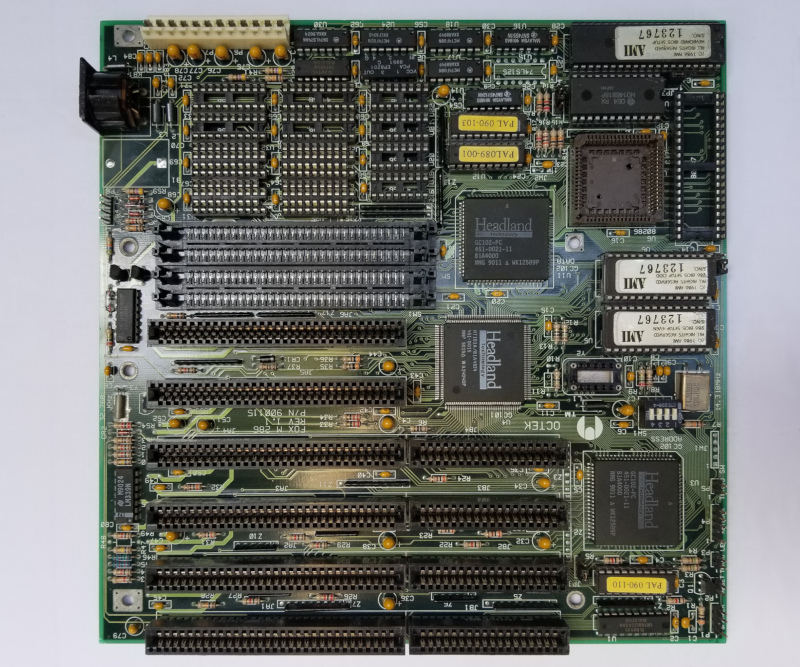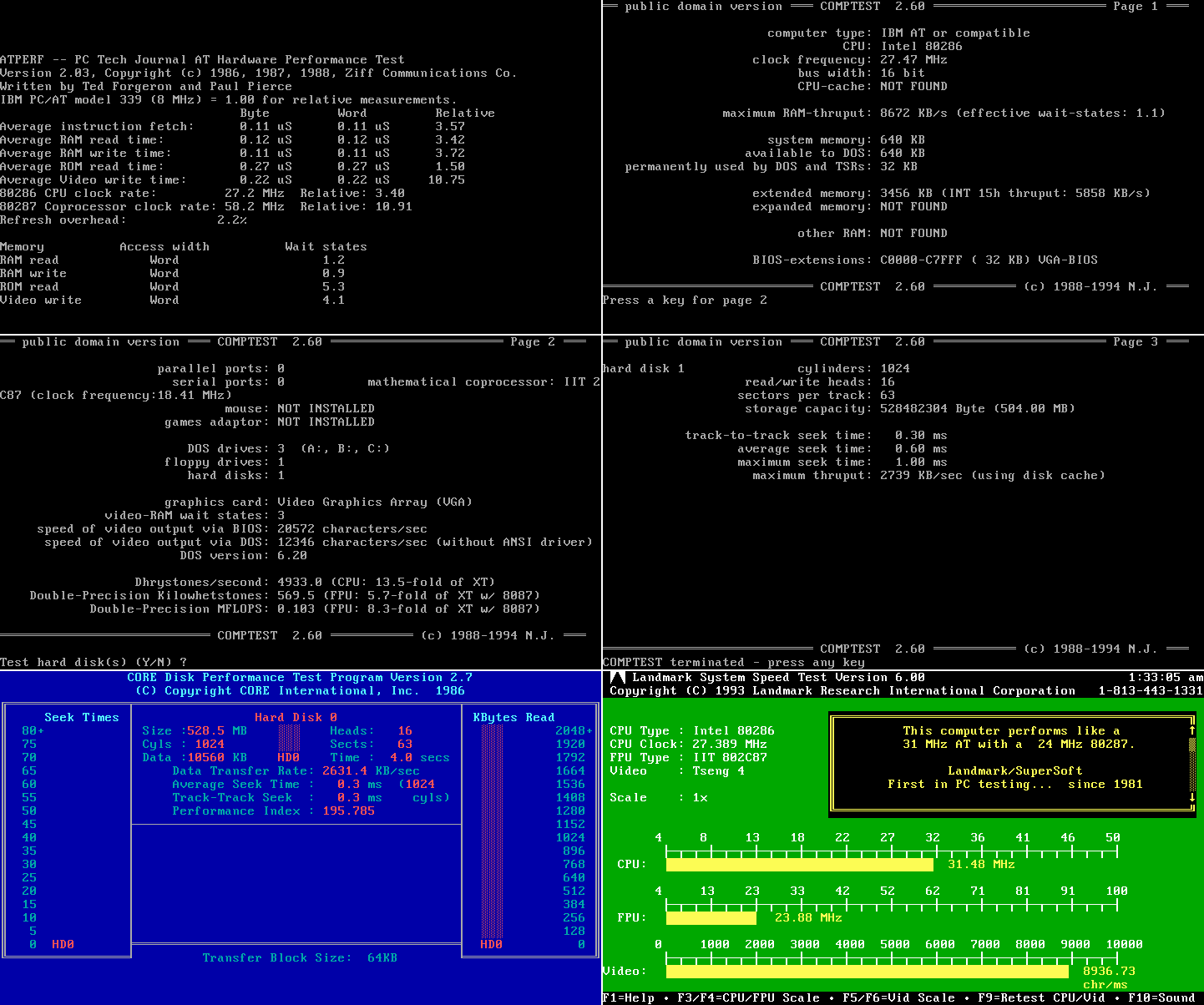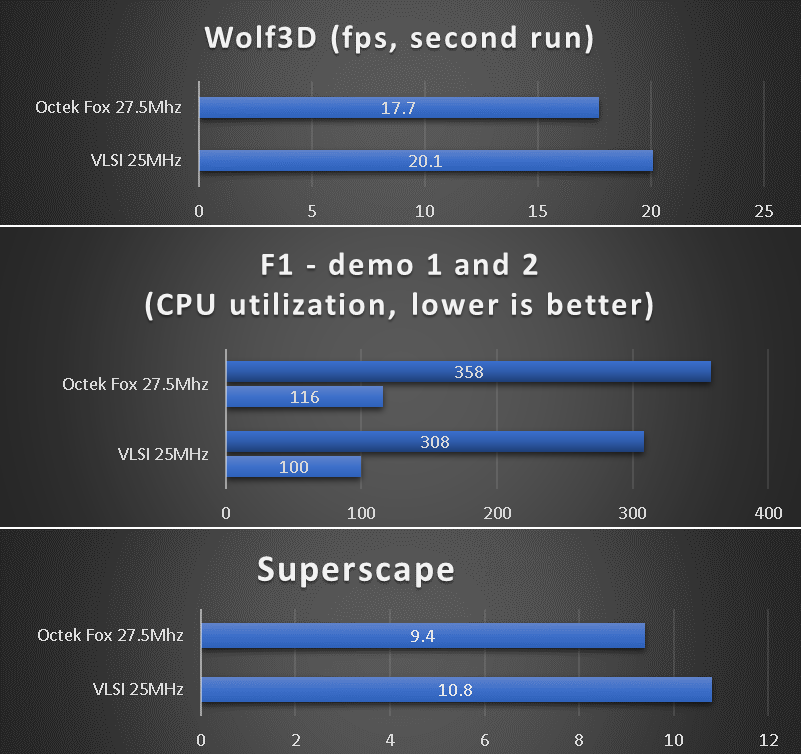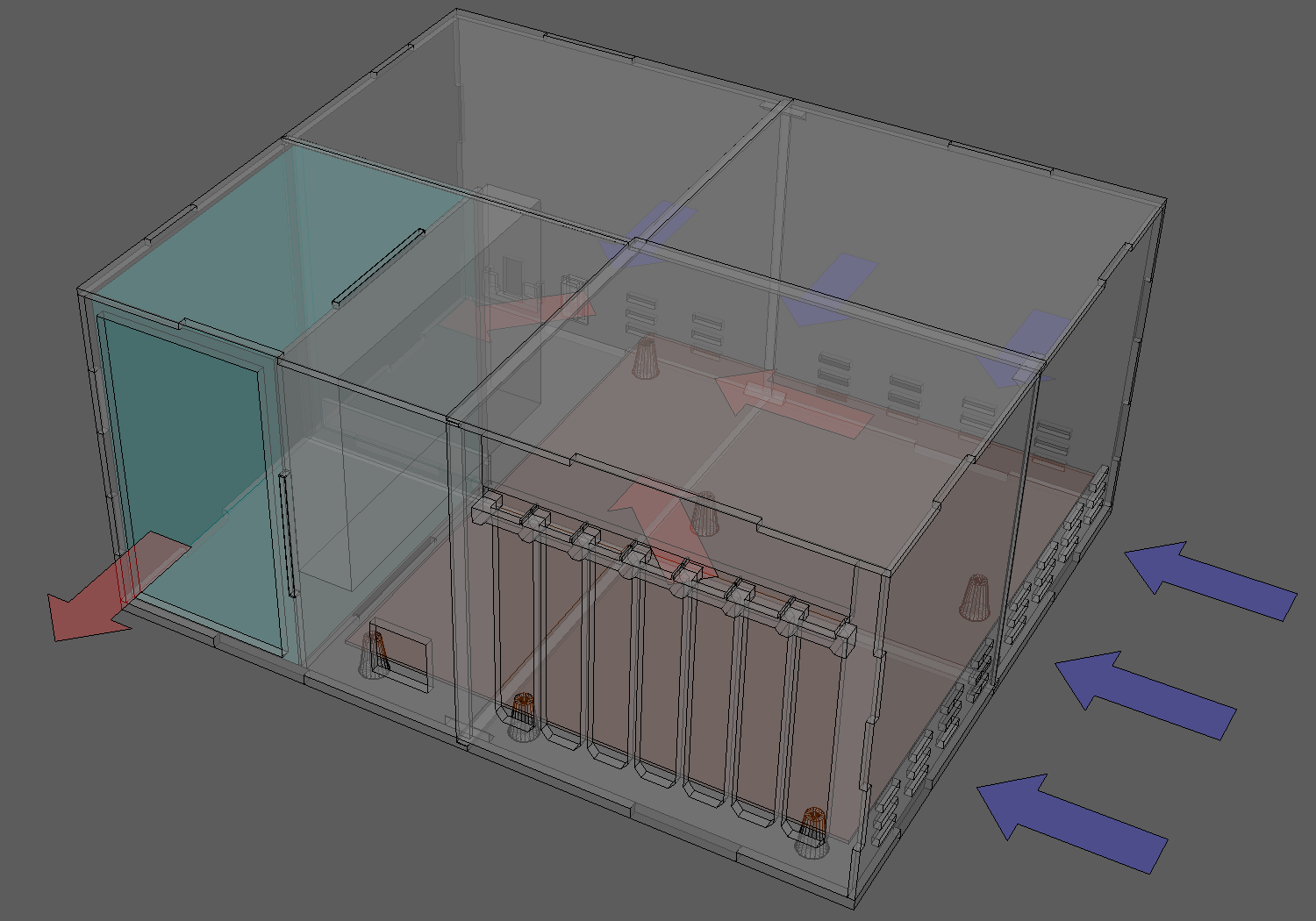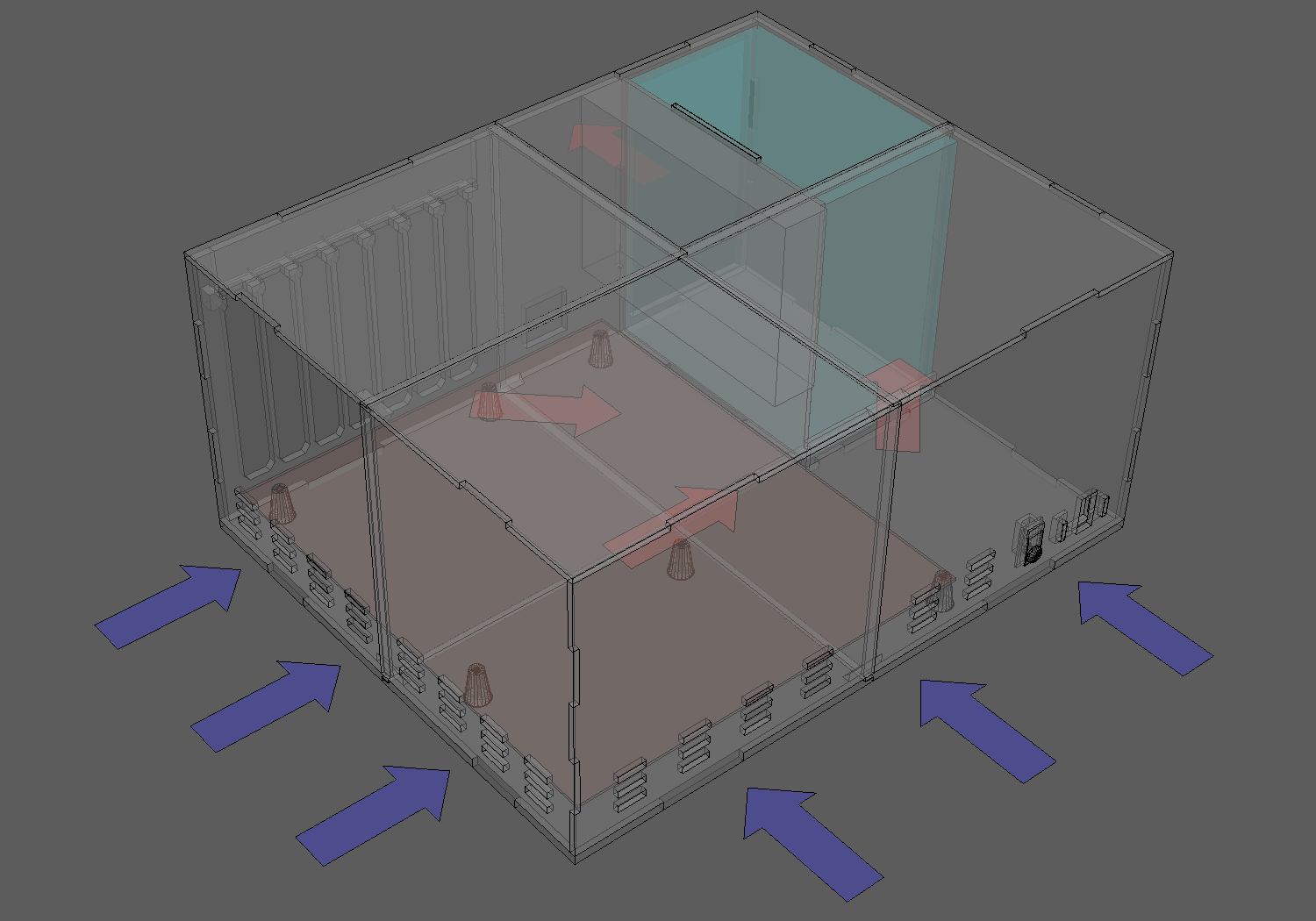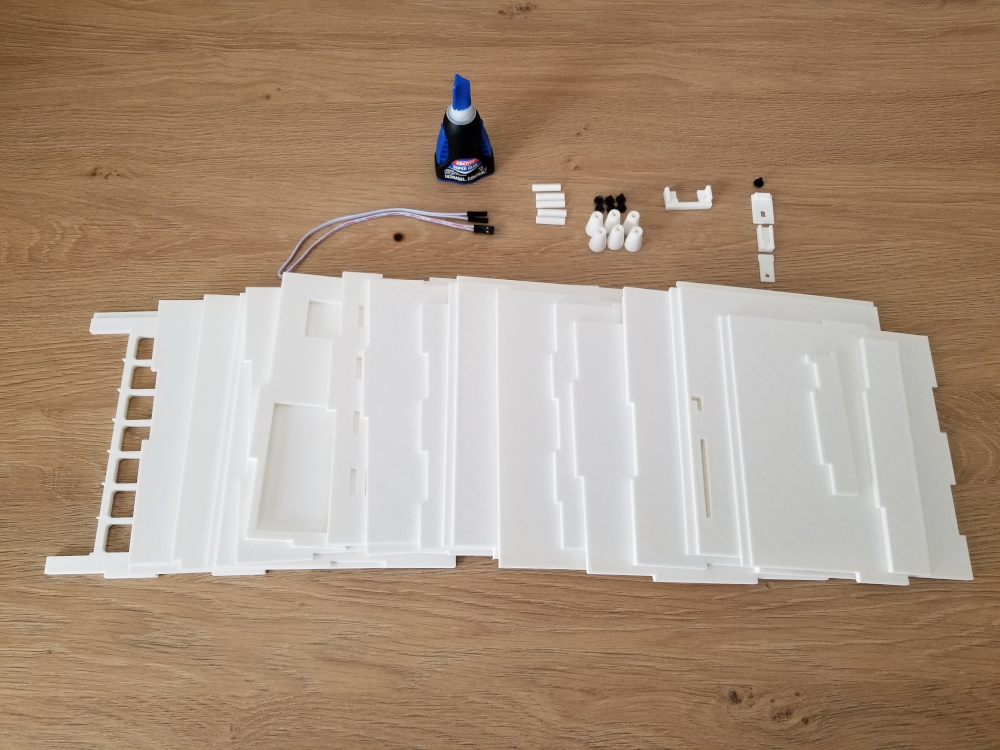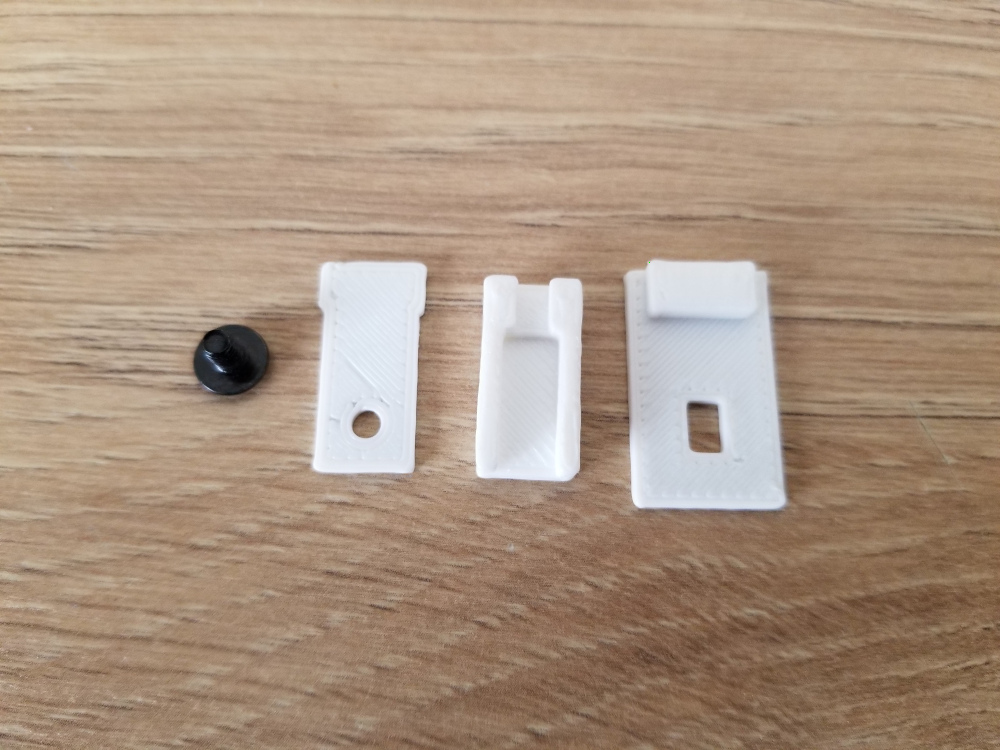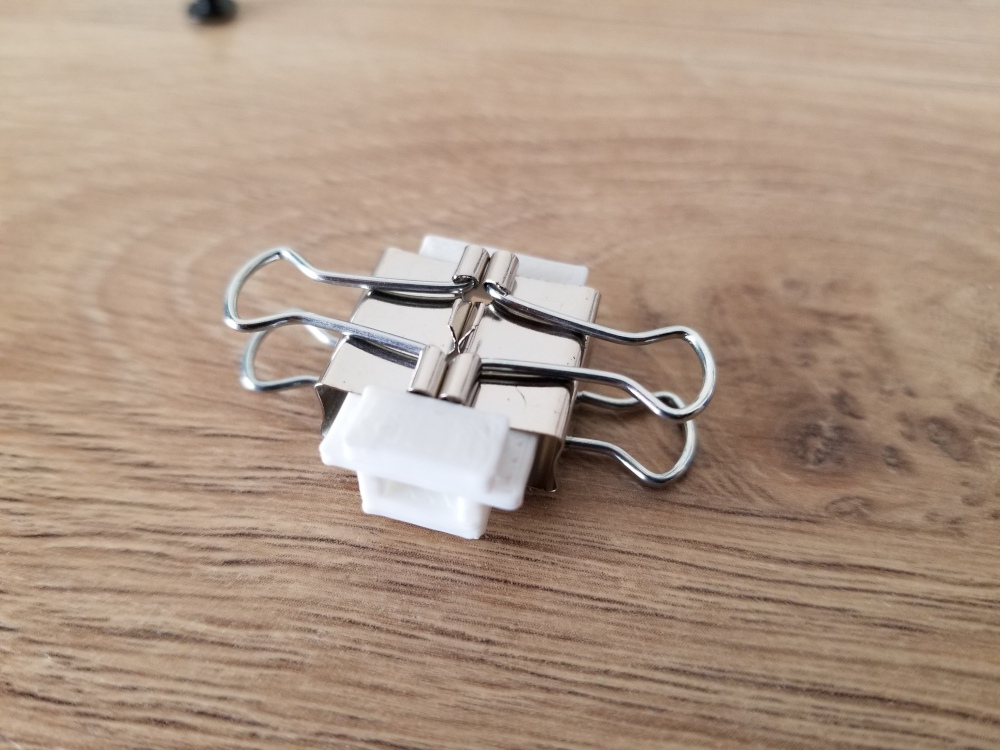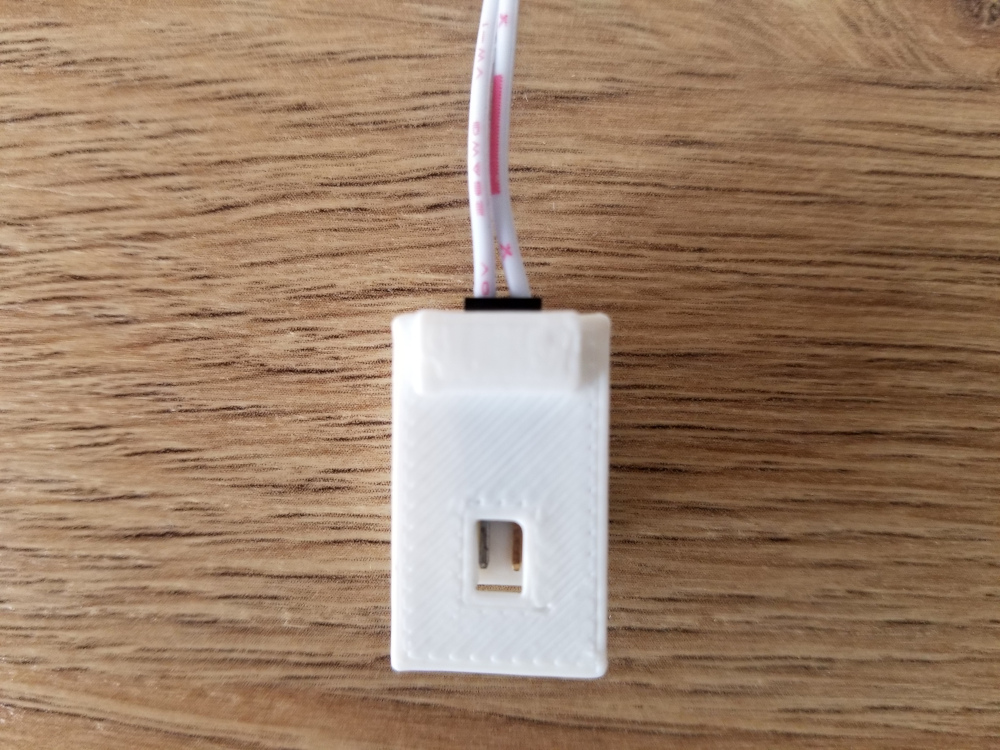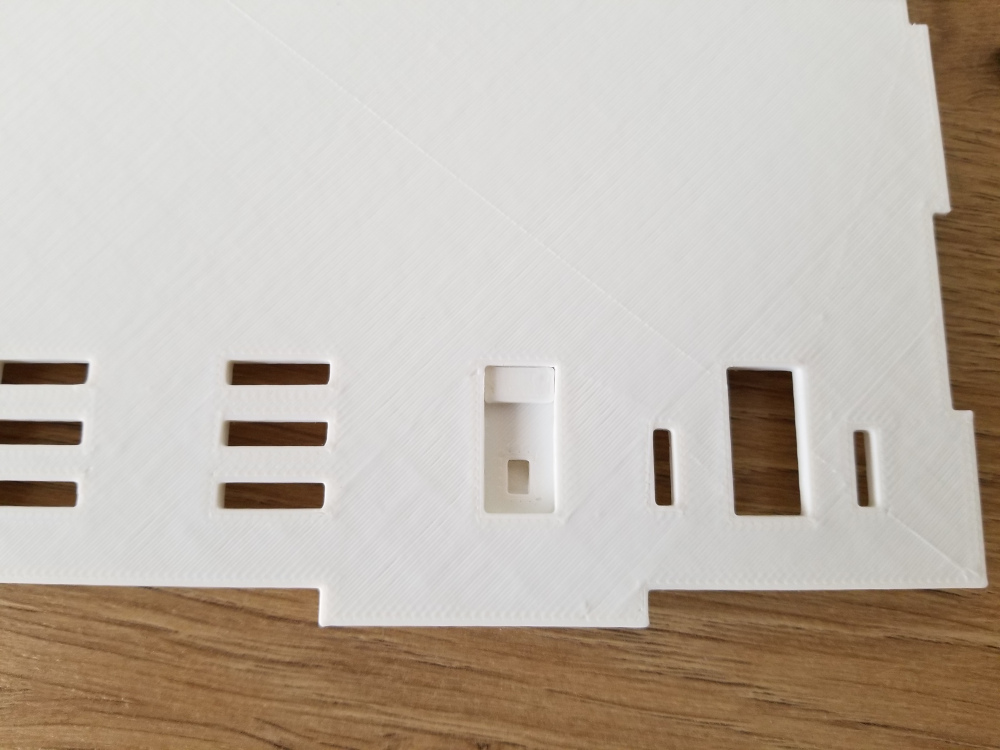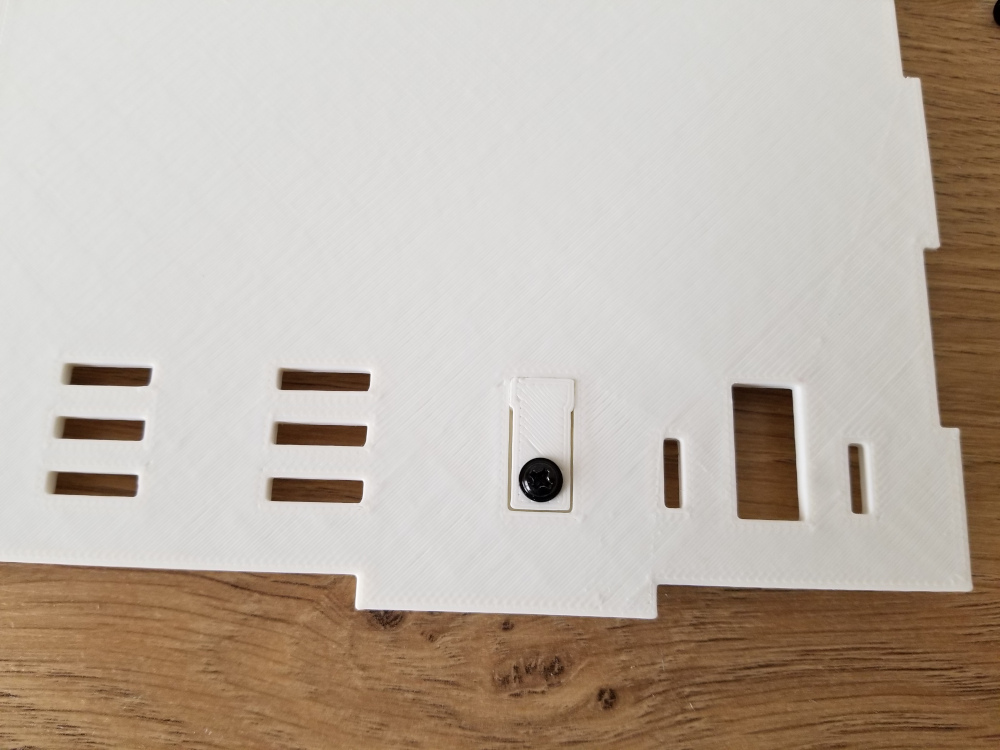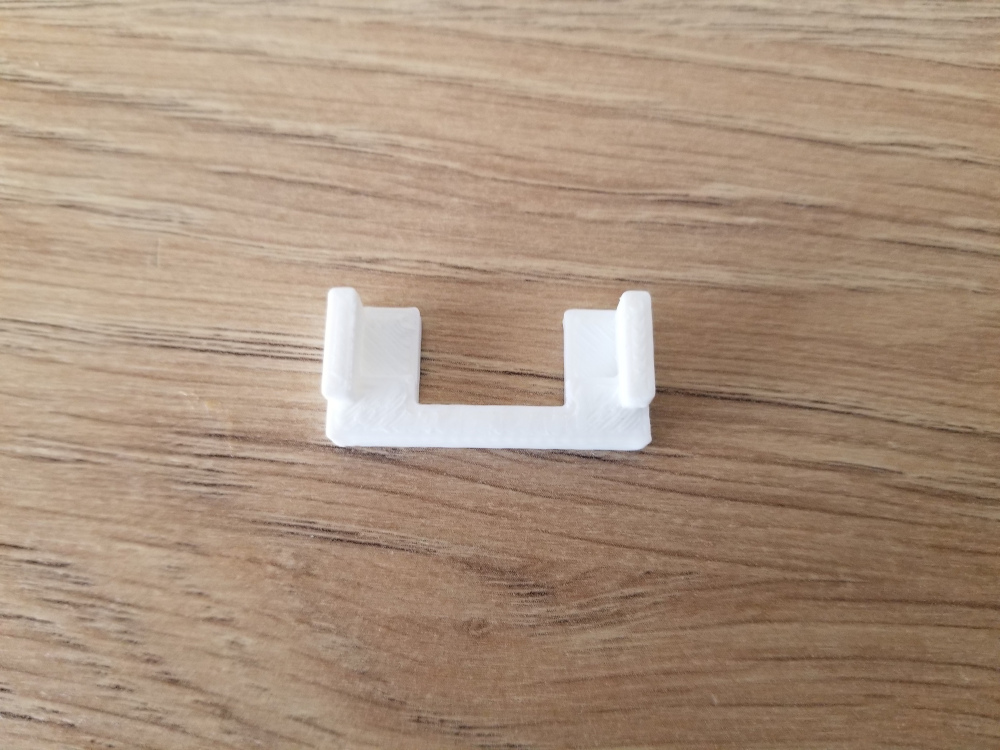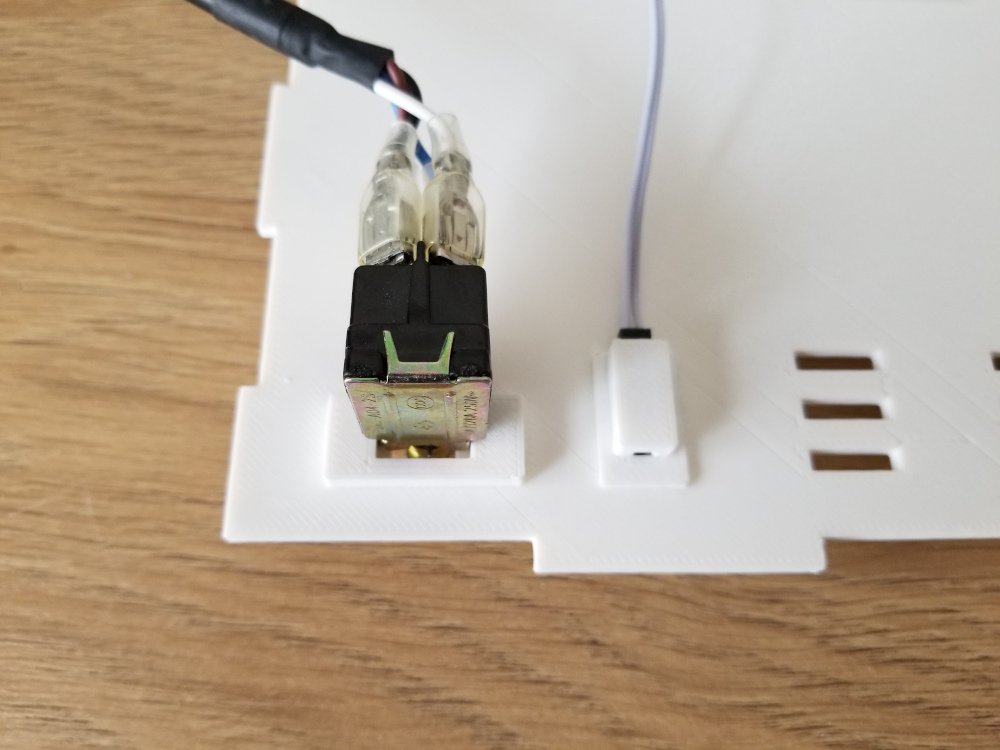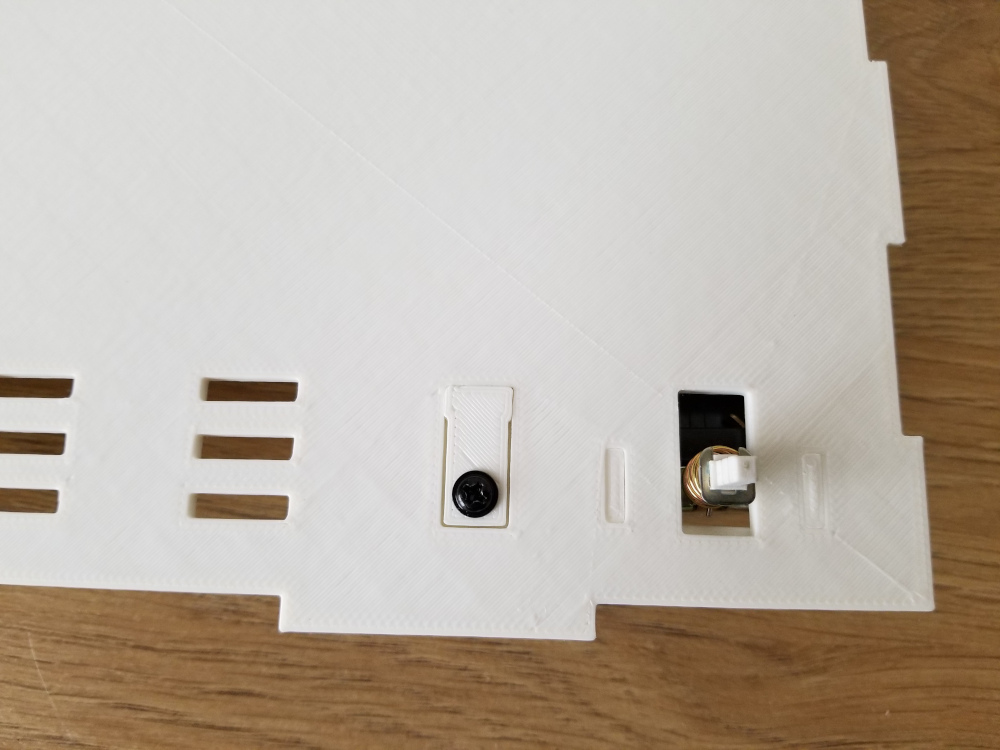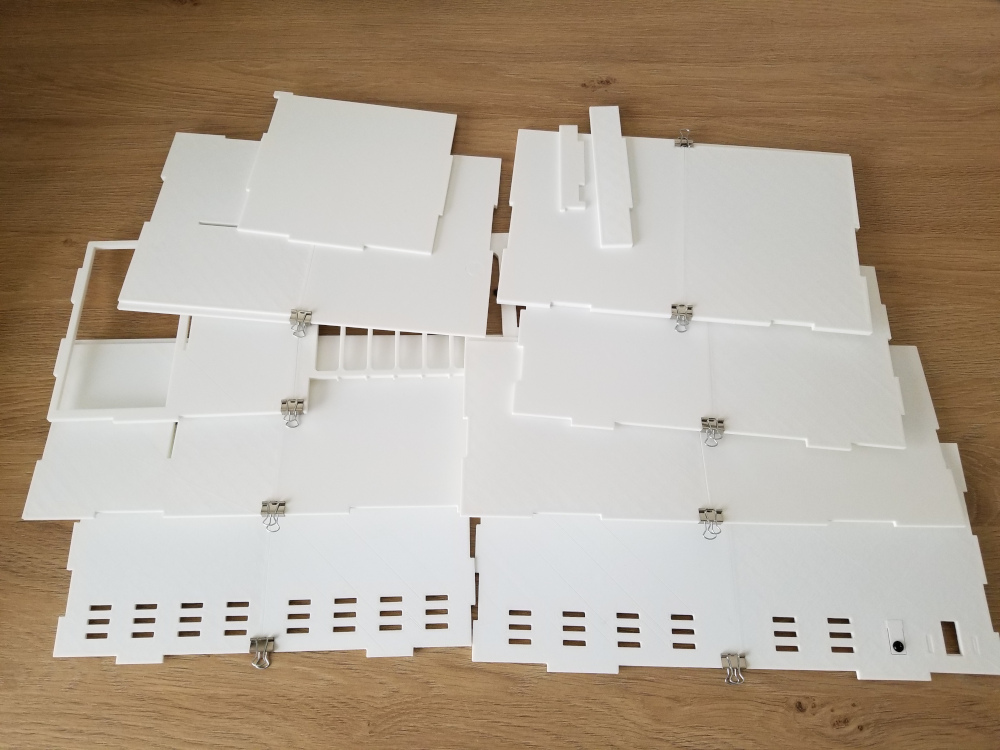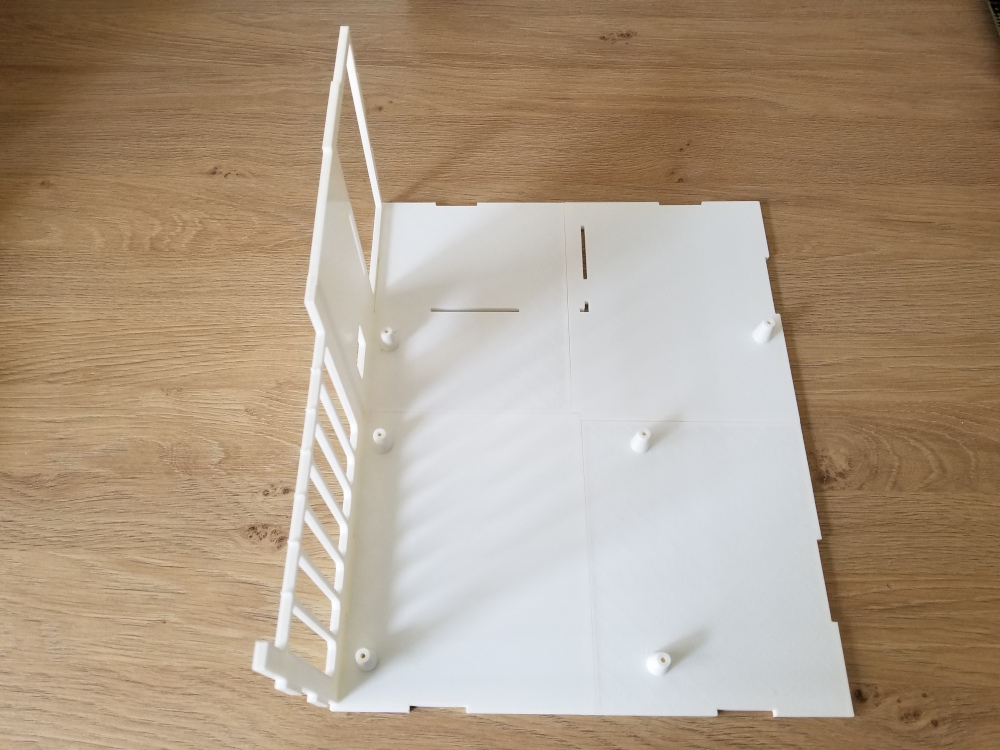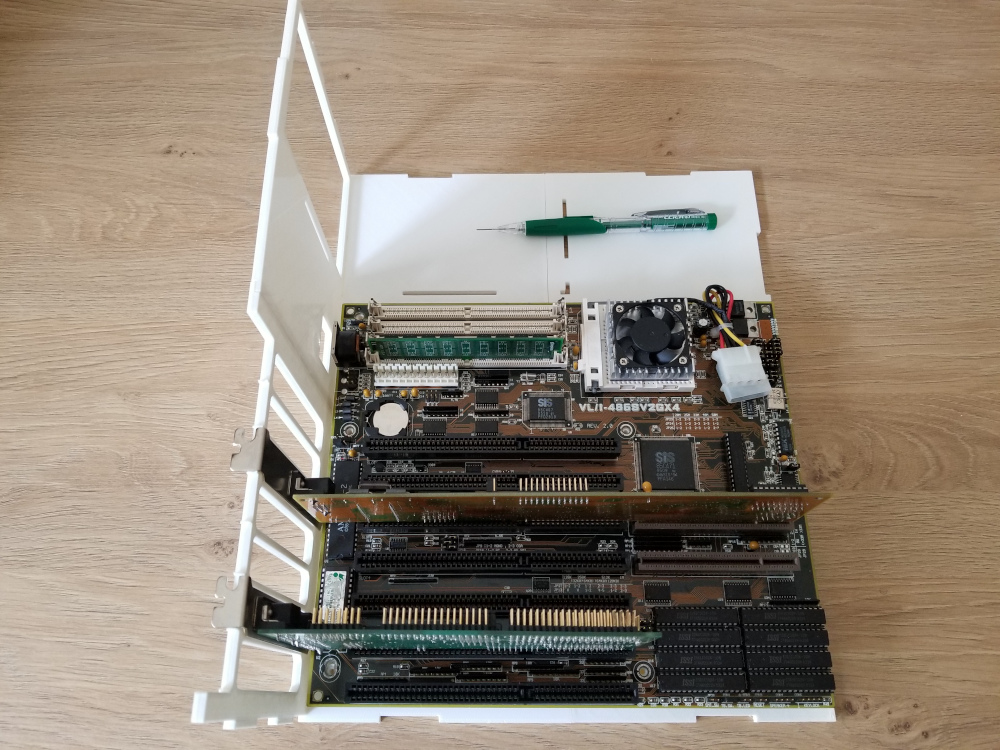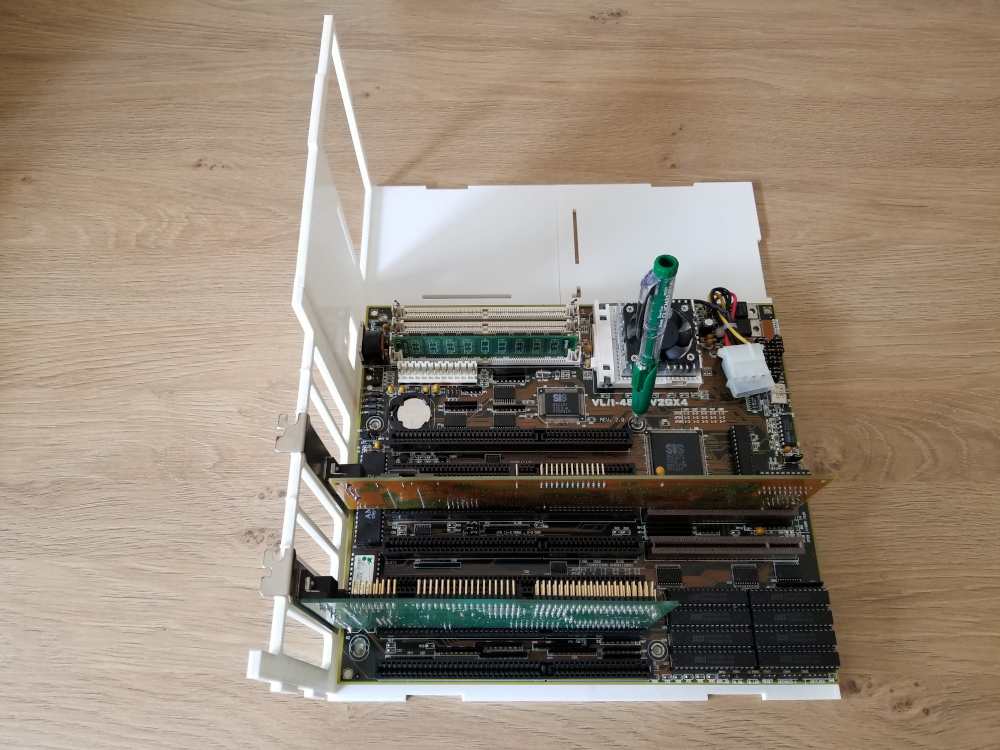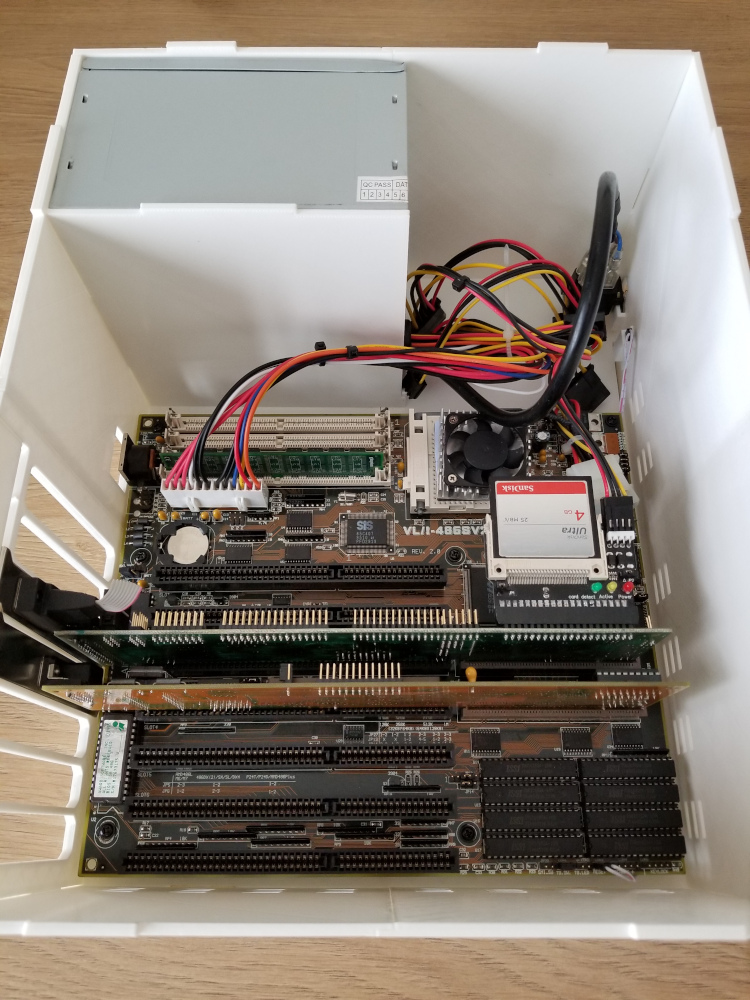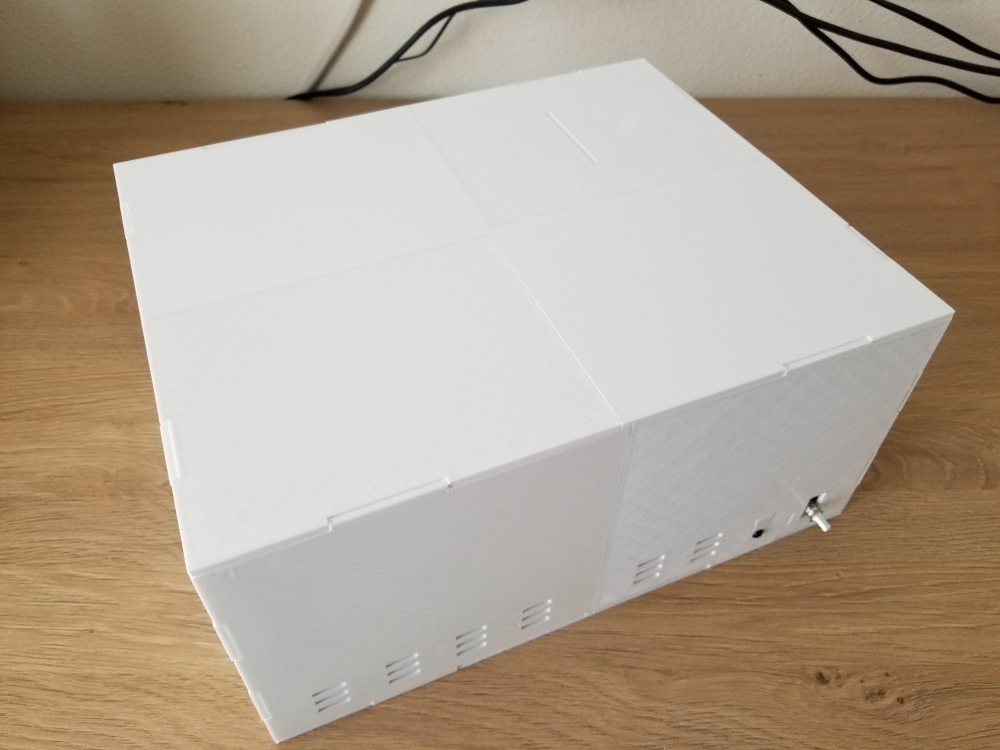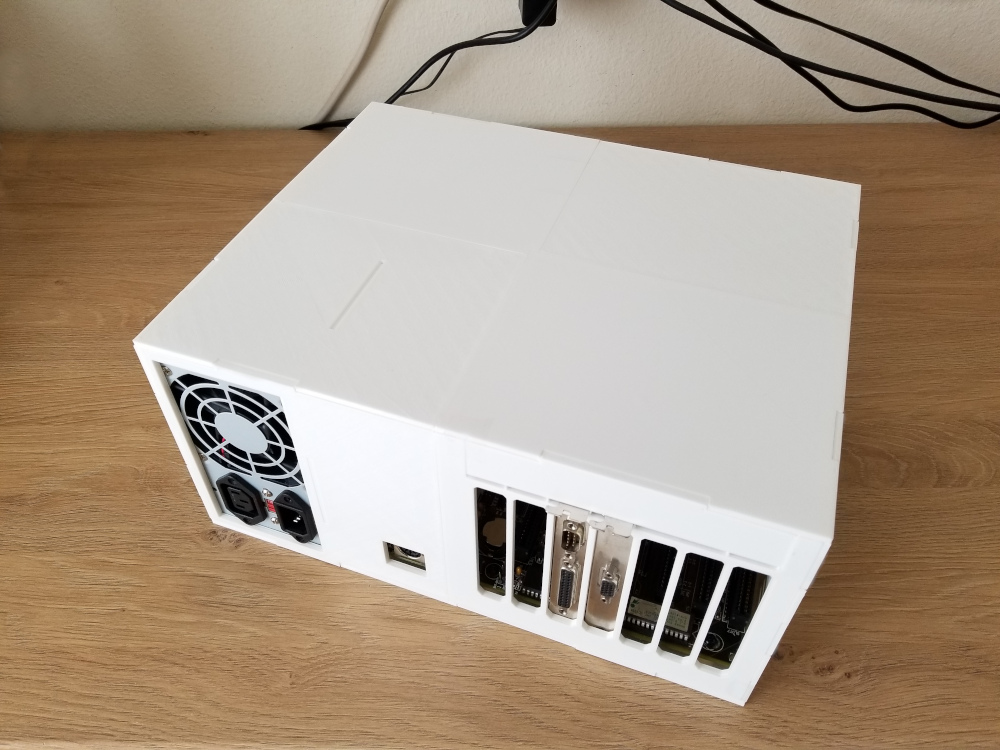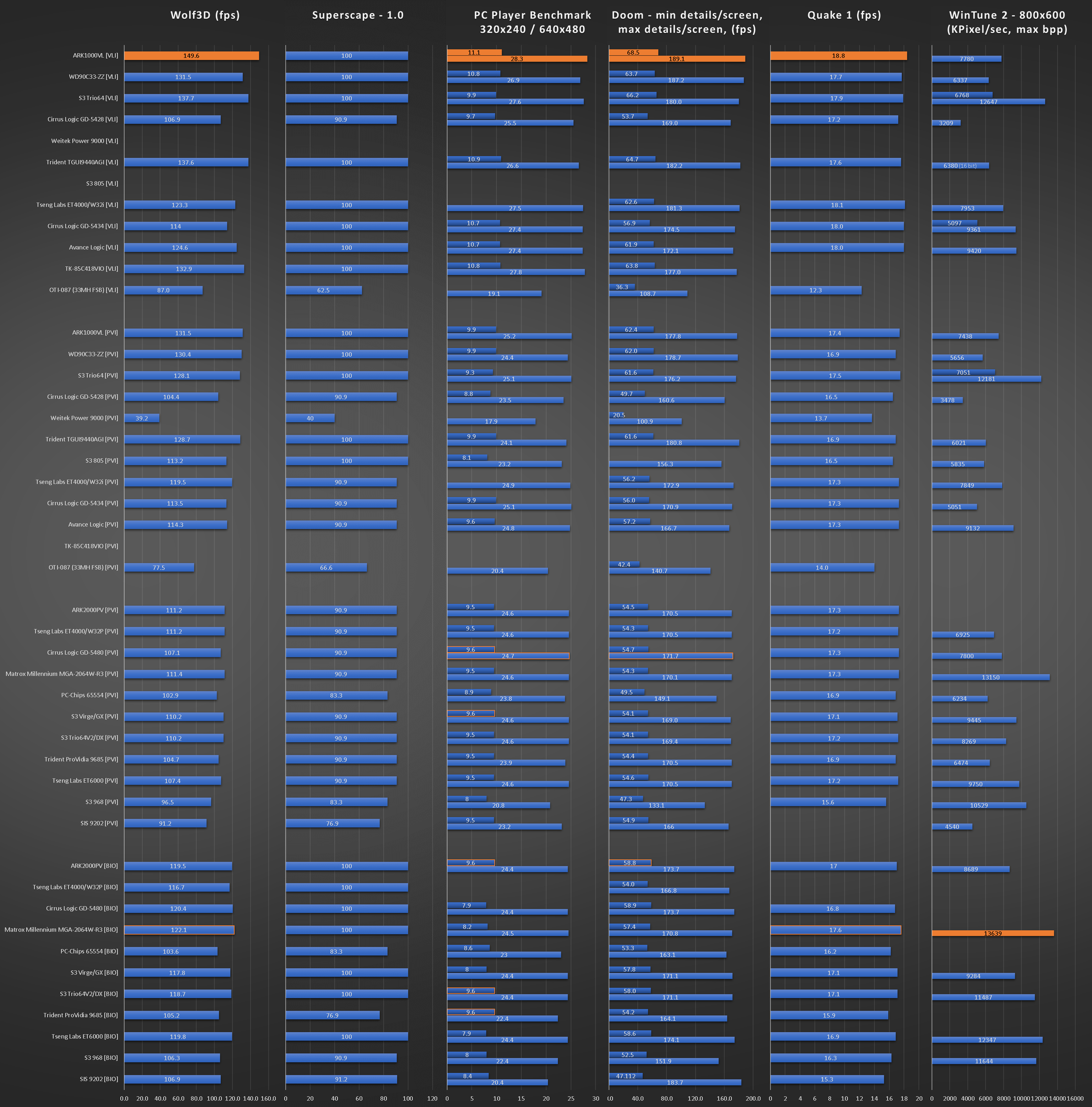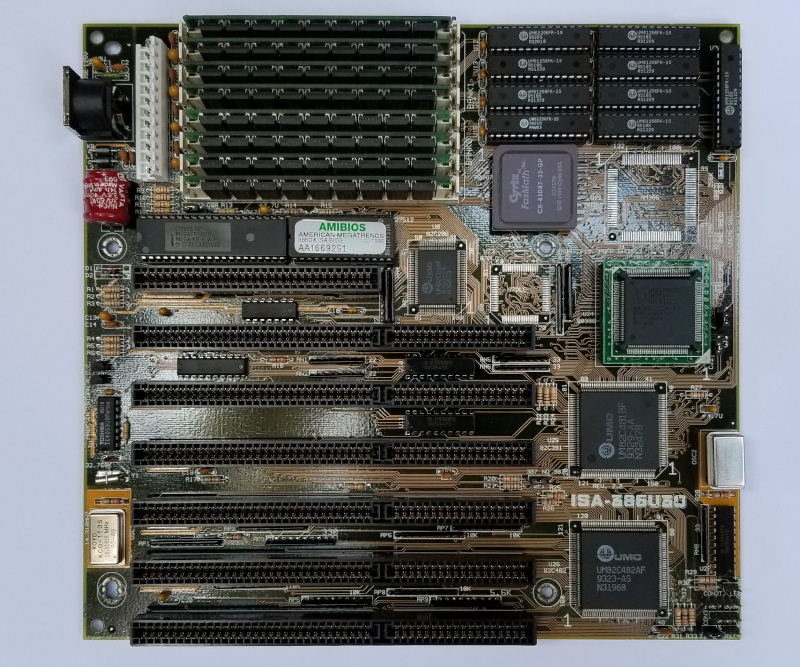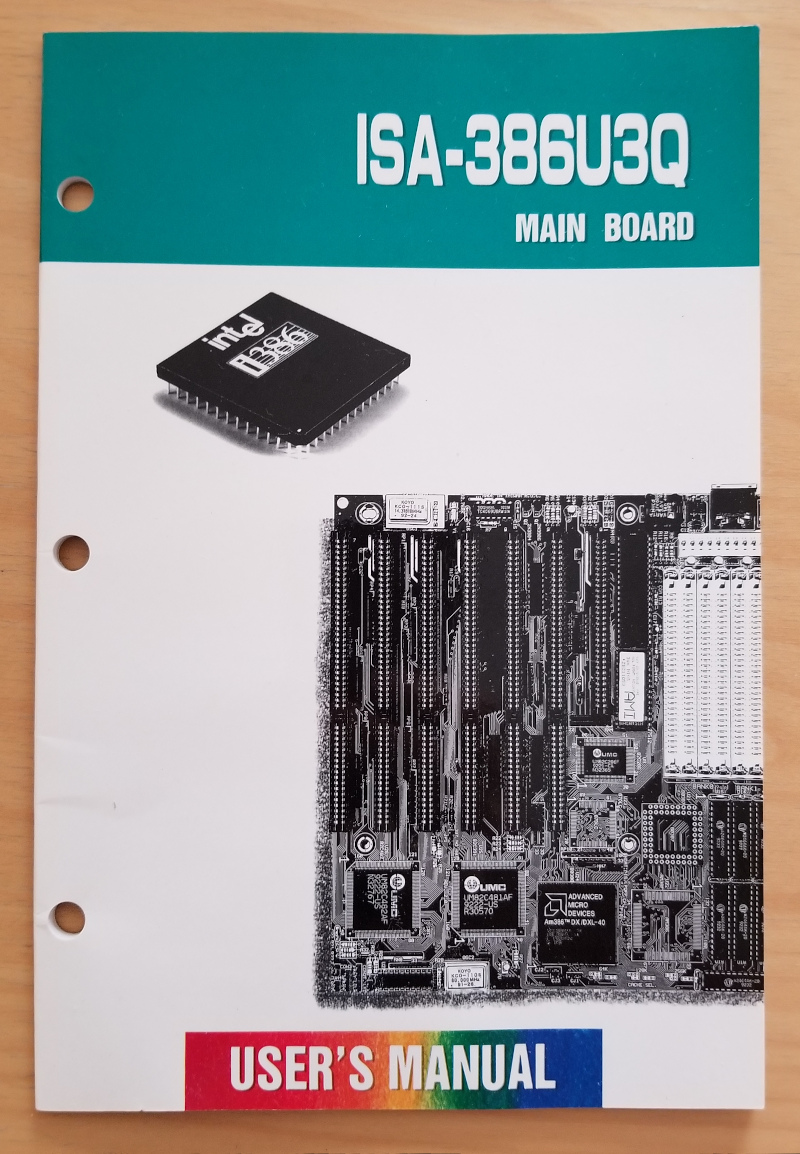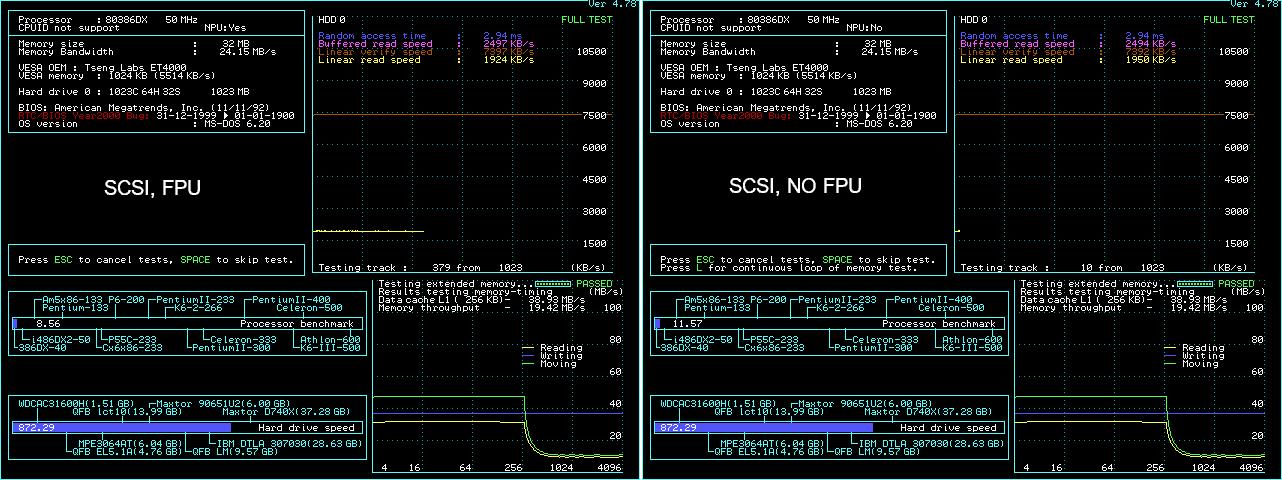I like my 486DX5 PCI/VLB/ISA PC from page 1 a lot, but my purist nature has been growing on me and i ended up building a clean VLB system from year 1994.
HARDWARE
- motherboard: ASUS VLI-486SV2GX4 rev 2.1, 1024Kb 10ns L2 cache
cpu: Am486DX4-100V8T 120MHz
ram: 64Mb 60ns parity FPM (Micron - the picture below is old and shows 2x16Mb, instead the current setup with 4x16Mb)
vga: ARK1000VL 2Mb (primary)
- Diamond Stealth 64 DRAM 2Mb (S3 Trio64)
S3 805 1Mb
Paradise 2Mb (WD90C33-ZZ)
Tseng Labs ET4000/W32i 2Mb
Trident TGUI9440AGI 2Mb
Weitek Power 9000
Cirrus Logic GD-5428 1Mb
Orchid Kelvin 64-VLB 2Mb (Cirrus Logic GD-5434)
Avance Logic ALG2228 2Mb
US Tech TK-85C418VIO 1Mb (UMC UM85C418F-GP)
OTI-087 2Mb
scsi: Adaptec AHA-2840/42A + UMC multi I/O card for ports
ide: Promise EIDE2300 Plus
audio: Sound Blaster 16 CT2230
lan: 3com EtherLink III
psu: 450W AT
input: BTC 5121, MS IntelliMouse 1.1A
os: DOS 6.20, Windows 3.1
partitions: 1x504Mb
NOTES
This build was less straightforward than expected for 3 reasons:
Initially i wanted this to be an Intel CPU based system, but had to switch to AMD to achieve complete stability at 120 MHz.
Intel's 486DX4-100 CPU running at 120 MHz was fine for the most part, but failed the 3D rendering tests.
The situation with HDD controllers was more hairy.
Obviously i couldn't go with ISA SCSI/IDE controllers for this rig, so i had to choose between SCSI Adaptec AHA-2840A and bunch of VLB IDE/EIDE ones.
Adaptec AHA-2842A operates in 10 Mb/s setting and achieves ~7.2 Mb/s read and 4Mb write speeds - not bad, but some of the EIDE adapters around that time spank it on performance. Also, the problem with this guy is that it uses bus mastering. Things work well with the DX4 CPUs because they do not use WB1 mode, but if i decide to switch to AMD DX5 CPU for example, i need to either disable the WB1 cache with jumper/bios, or use an EIDE adapter.
I wanted to find the best option, so i spent a moment to test couple of VLB IDE/EIDE boards. This revealed interested details that i will post at some point later. The best performing and most stable EIDE VLB adapter was Promise EIDE2300 Plus, so it was given the honor to complement the rig. Driver in DMA mode, speed 8 (highest). It is worth mentioning that it works just fine in DMA mode with POD CPUs + L1 cache in WB mode - something not all VLB EIDE controllers can brag about.
I had to make some "difficult" decisions about VGA adapters.
There are quite a few good ones in the pack.
In Windows things are very simple - S3 Trio64 then the rest. In 16 bit mode it starts to even take on Matrox Millennium PCI.
In DOS Ark1000VL is the fastest thing around followed an inch behind by S3 Trio64.
At the end i went with Ark1000VL, because this is more or less a DOS PC. Other than few Win3.1 apps - there is little else for me there.
Will provide in subsequent post the collected performance information about VLB/PCI VGA adapters.
Getting the system maxed-out with 64Mb of RAM and 1024Kb of SRAM + WB2 mode was a real challenge.
I had to comb through a lot of cache chips to find 9 that work well.
So far so good, but i have this nagging suspicion that when in WB2 mode things may not be solid 100% stable.
Looking for ways to prove that ...
EDIT: Few months passed already and the system is just solid. Ok, i was not able to prove it unstable, but gladly accept the result.
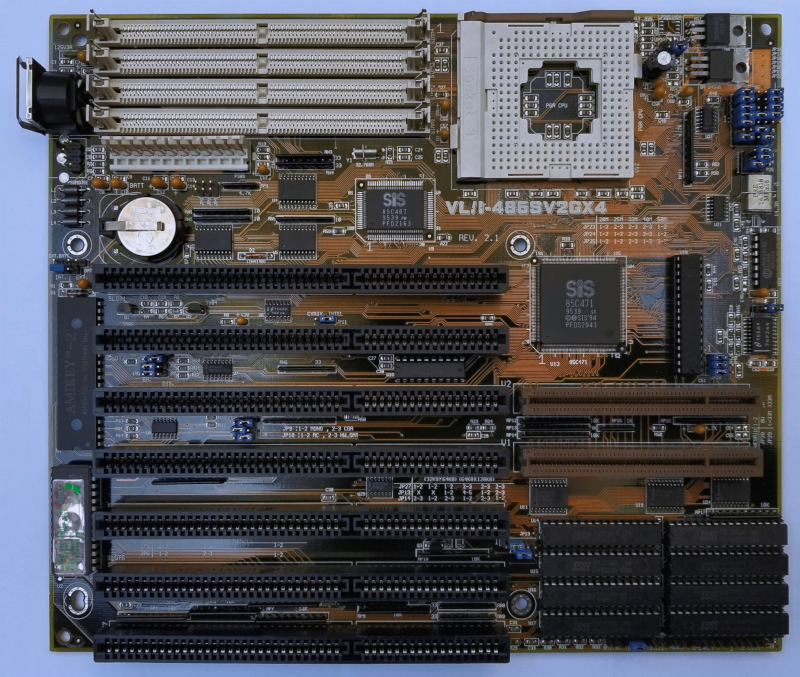
There are mild differences between revision 2.1 and 2.0 in the upper right corner, related to CPU voltage control.
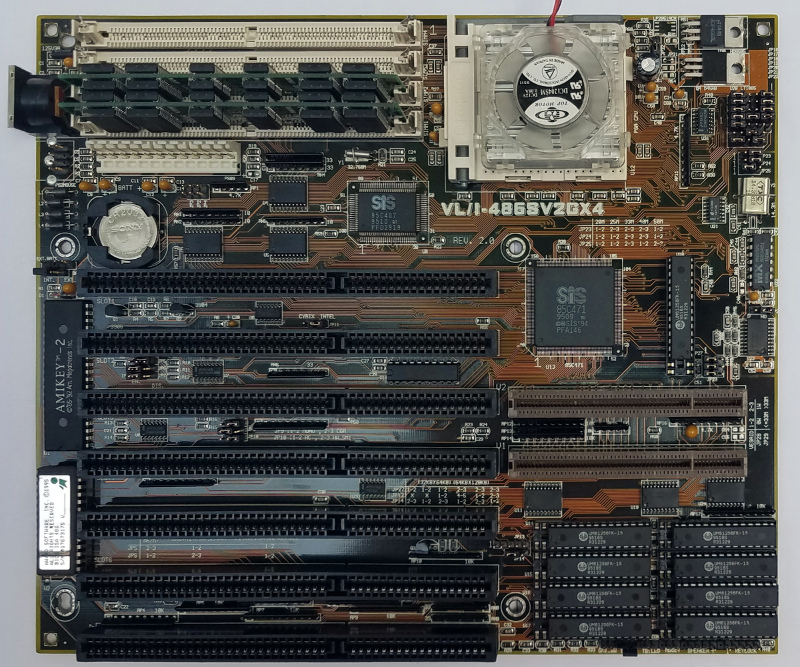
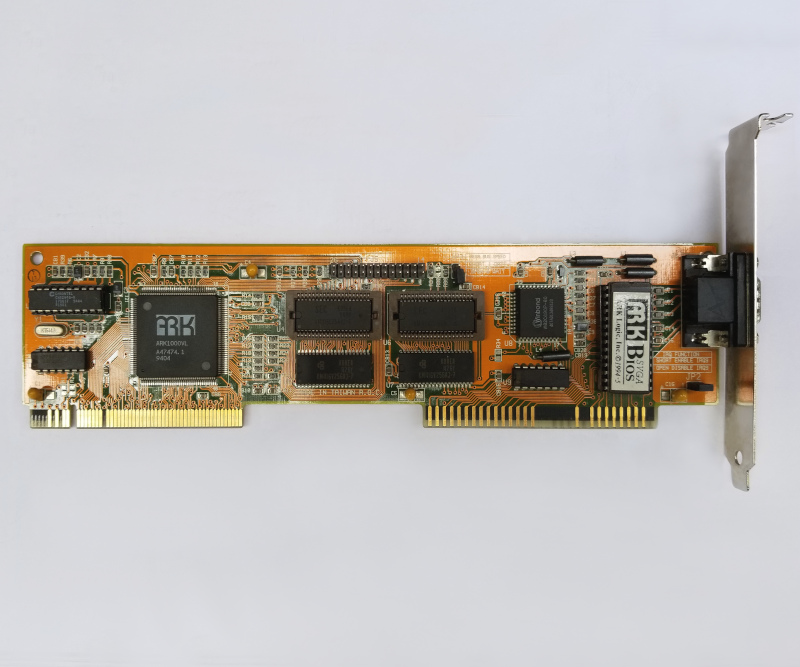
Will not post pictures of the rest of the VLB adapters here, they are already shown on the first page of this thread.
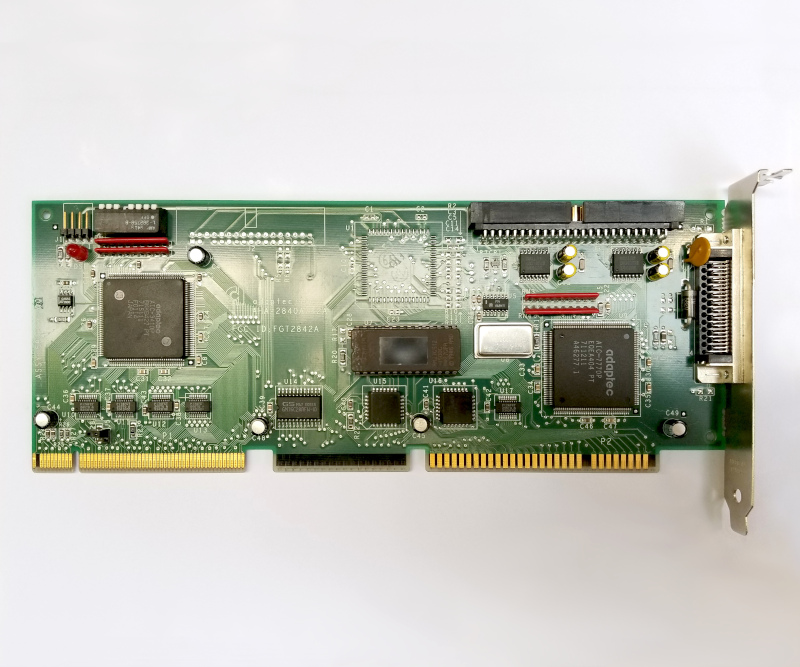
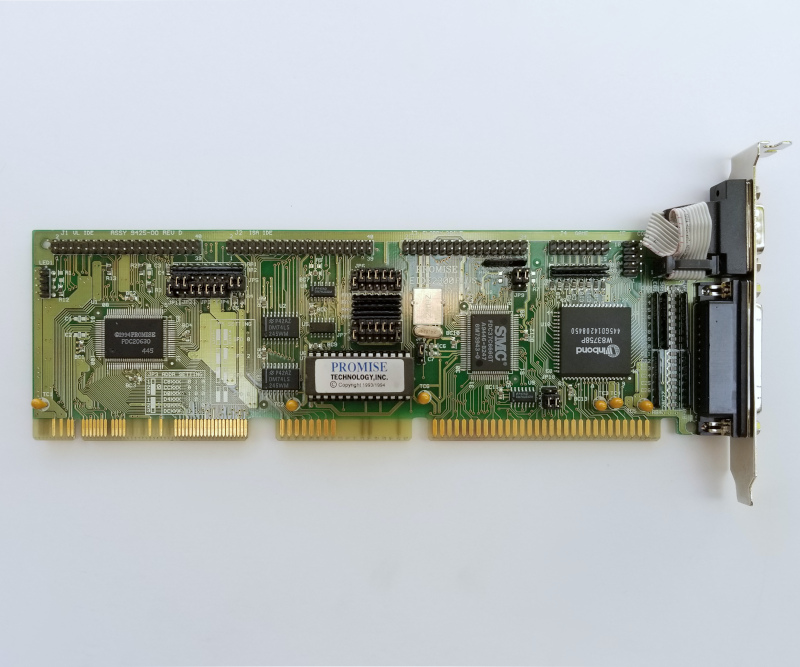
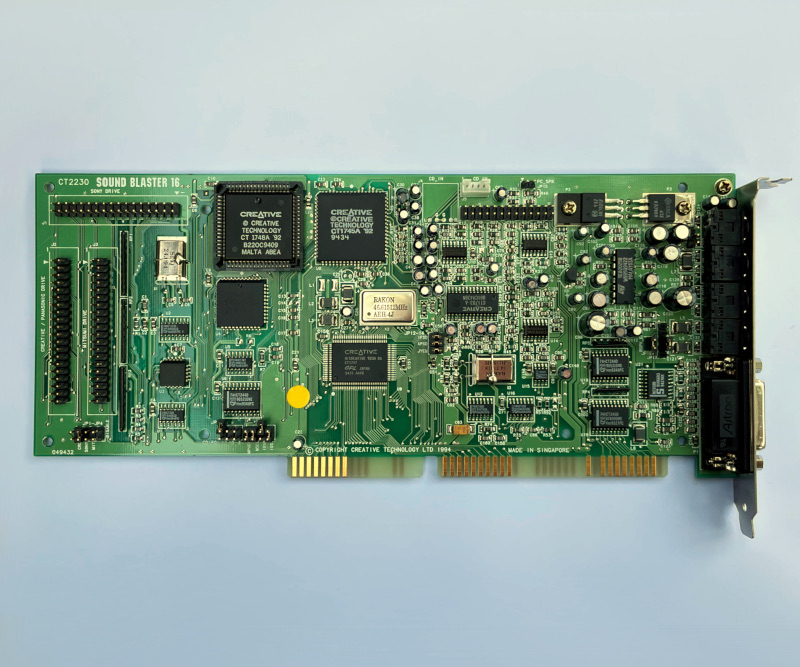
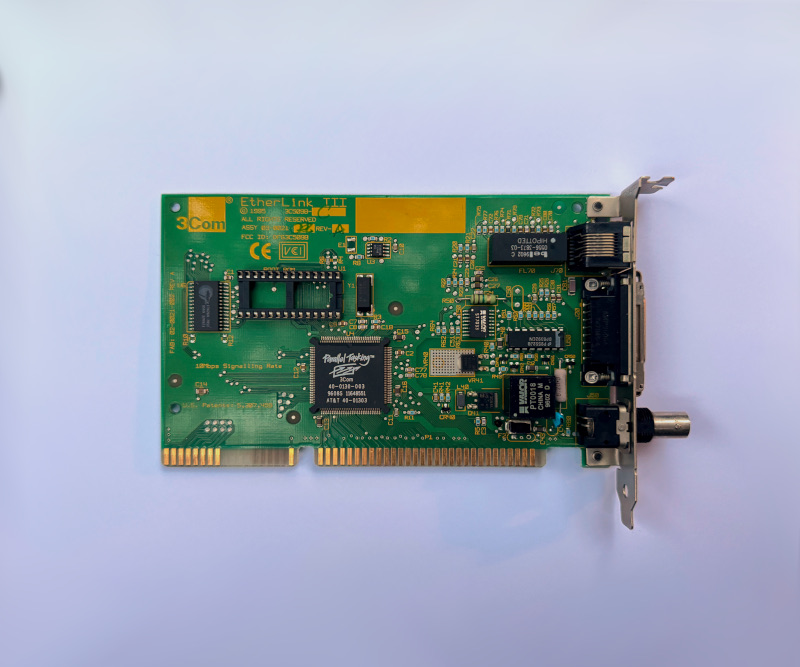
486DX4 at 120MHz with Adaptec AHA-2842A
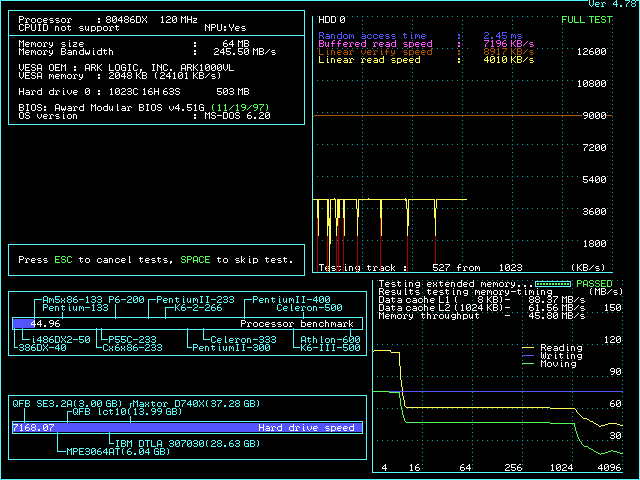
How things look in the physical world:
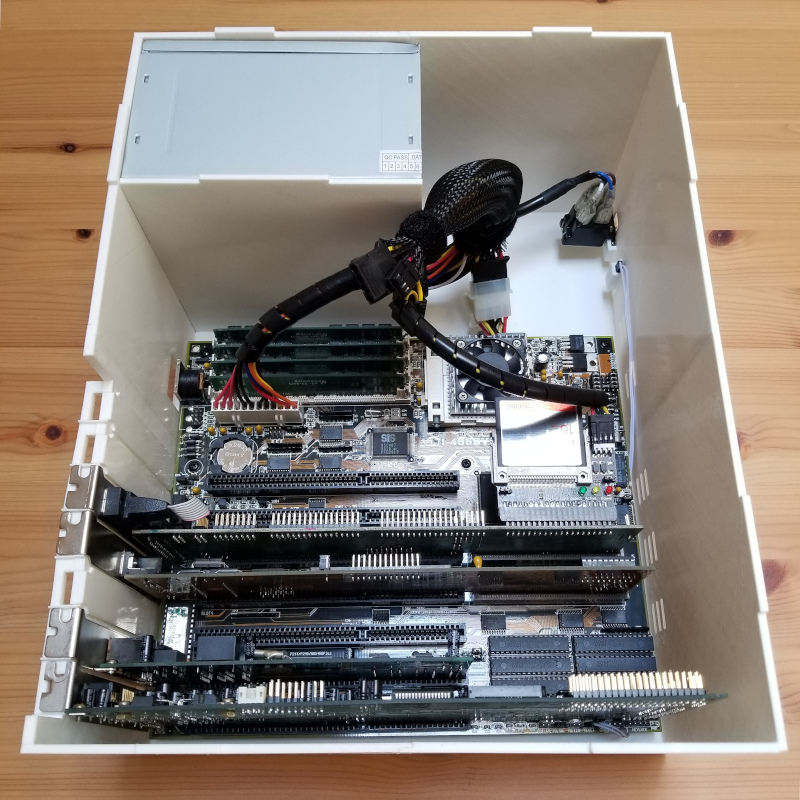
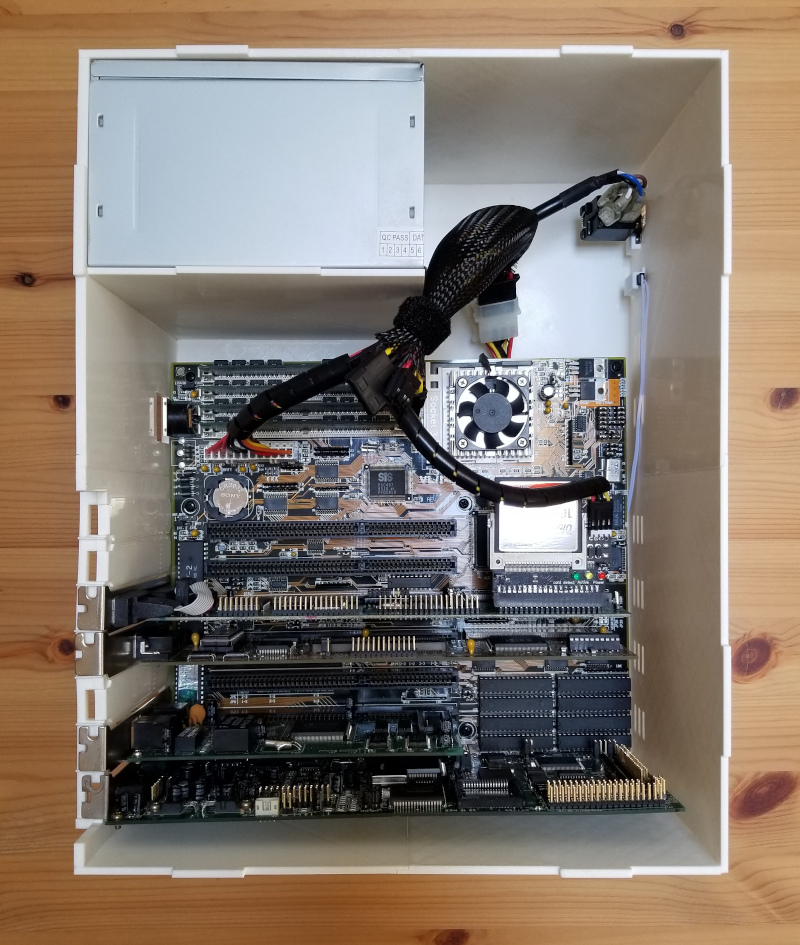
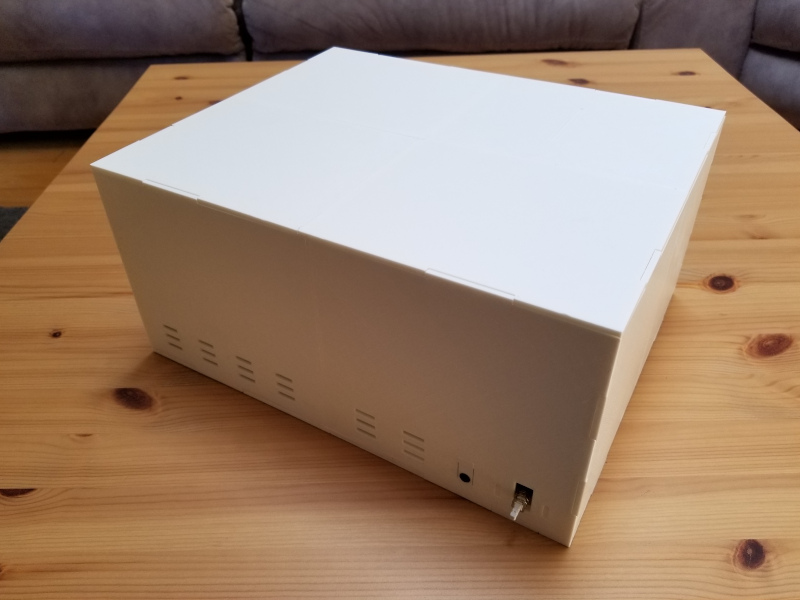
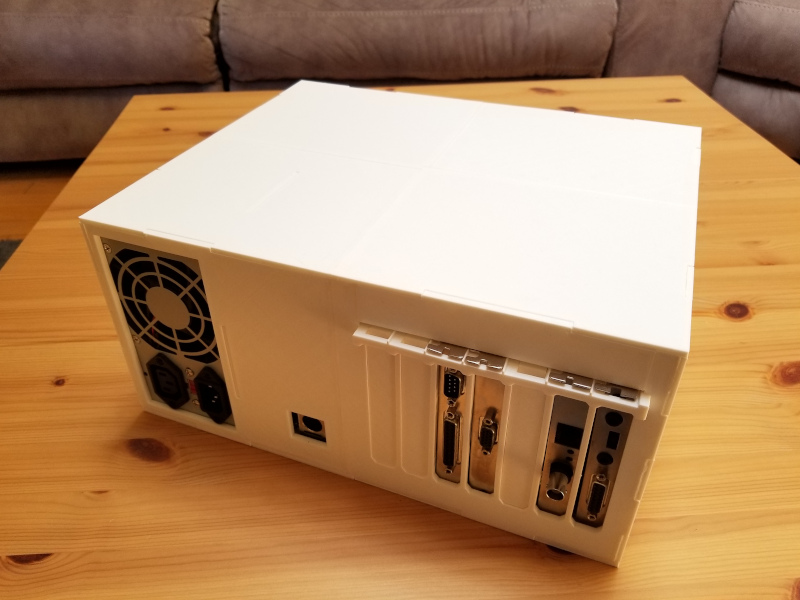
-----------------------------------------------------------------------------------------------
Tested the system with AMD-X5-133ADZ running at 160MHz with Promise EIDE2300 Plus and Transcend 133x CF card, which is highly compatible with this class hardware (no write access issues and other nonsense).
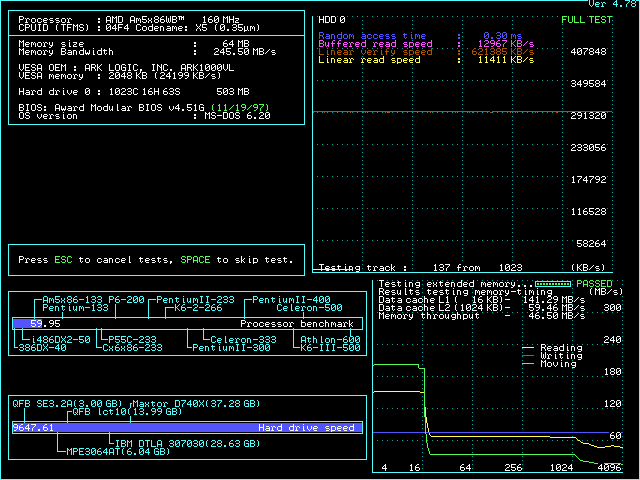
-----------------------------------------------------------------------------------------------
I couldn't resist to check how this clean VLB system compares against two other champs:
Biostar MB-8433UUD-A (ISA/PCI) - one of the fastest 486 PCI boards in terms of VGA performance (despite some stability issues, 3D rendering, etc.)
Asus PVI-486SP3 (ISA/VLB/PCI) - what i consider the Maybach of 486. 😀
Matrox Millennium seems to be the fastest PCI card until the end of year 1996, so i picked it for this comparison.
Used Ark1000VL as a VLB representative, included S3 Trio64 for the Windows test only.
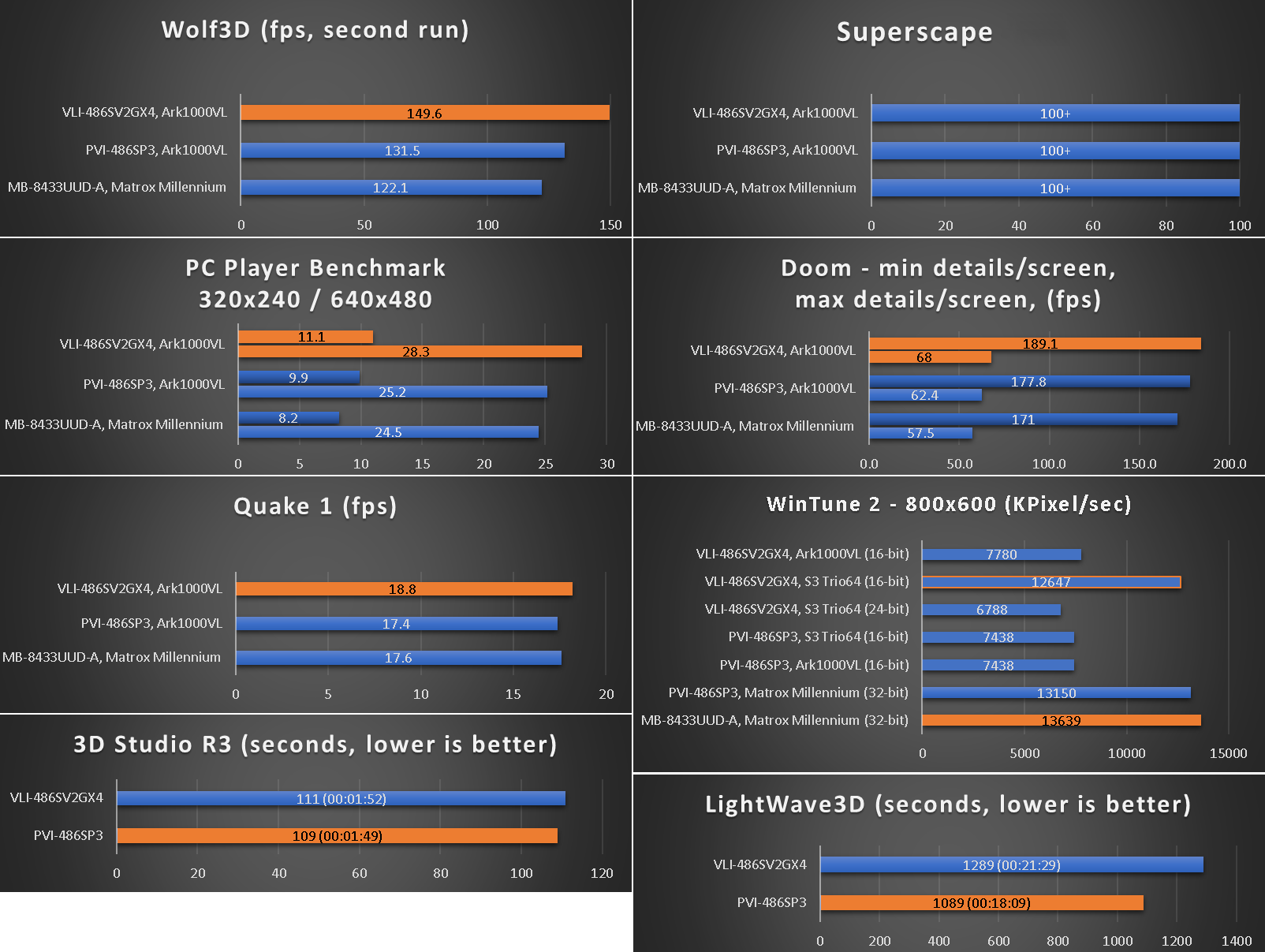
Linking here the composed benchmark results as well.
VESA local bus video cards have clear advantage in DOS, but lack in Windows.
As i mentioned above already, will try to post the full stack of VLB/PCI VGA perf data in the coming days.
Asus PVI-486SP does really good job at squeezing the most out of the CPU - the best i have seen among 486 mobos.
So i am not surprised that it outguns the VLI board at the 3D rendering tests by quite a margin.
At the end of the day, i am still flip-flopping with this rig between 1994 486DX4@120MHz+SCSI and 1995DX5@160+EIDE.
It feels like it will be an 1995 rig at the end of it, which means that i will need to get back to making a 1994 one at some point later - not a bad thing to look forward to. 😀
The Asus VLI-486SV2GX4 story evolved with AMD Am5x86 processor running at 200MHz (4x50)
